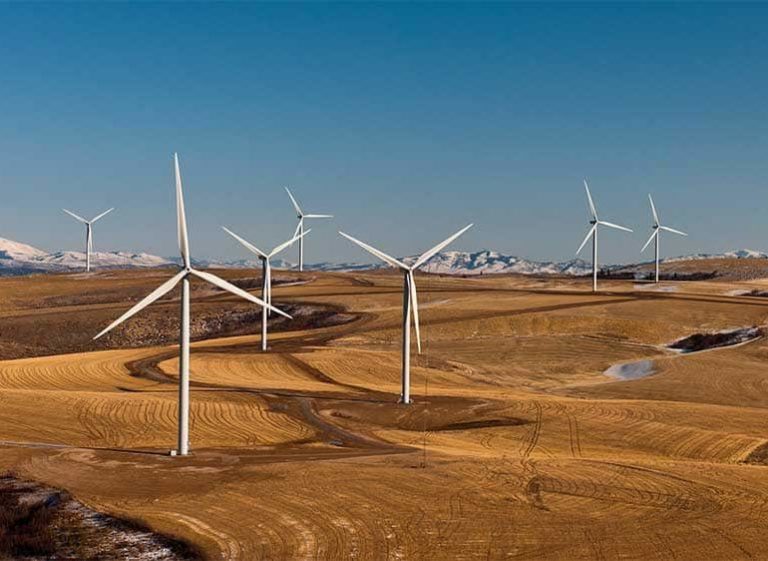BP published its Global Energy Outlook earlier in the year. The key message is that renewables are growing faster than any fuel in history, but carbon emissions keep rising. In addition, energy demand is set to increase by a third by 2040 driven by increases in prosperity in the developing world.
Introducing the Outlook, BP CEO Bob Dudley said “One of the biggest challenges of our time is a dual one: the need to meet rising energy demand while at the same time reducing carbon emissions.” The world needs both – doing one without the other will not work.
The key findings in BP’s latest Energy Outlook are:
Even though global GDP will double by 2040, primary energy demand will increase only by a third, due to energy efficiency
The power sector will use around 75% of the increase in primary energy
85% of the growth in energy supply will be generated through renewable energy and natural gas, with renewables becoming the largest source of global power generation by 2040
Global carbon emissions continue to rise, signaling the need for a comprehensive set of policy measures, including decarbonisation, to achieve a substantial reduction in carbon emissions.
The majority of the increase in global primary energy will come as a result of the increase of income per head in the developing world, demanding more energy. Without an increase in energy becoming available this rising prosperity will be suppressed.
This will lead to growing competition between different energy sources driven by abundant energy supplies, and continued improvements in energy efficiency, keeping energy prices low.
Factors underpinning global energy changes and trends
There is a clear correlation between human progress and energy use. Around 80 per cent of the world’s population today live in countries where average energy consumption per head is less than that the European average. As a comparison, the average energy use per head in 2016 in China and Brazil was half that in Europe and in India about a fifth. Conversely, the US average was twice that in Europe.
Increasing prosperity means that the world will consume a third more primary energy by 2040 compared to now, but that will still leave about two thirds of the world’s population living below the European threshold.
Trade disputes and threats increase energy security concerns. This leads countries to increase domestically produced energy and reduce dependence on imports.
The greatest impact is on countries and regions most exposed to foreign trade and energy imports. Notable examples are China, Japan, India and Turkey. This results in less imports of oil and gas, and a shift in the fuel mix towards domestically-produced sources of energy, such as coal, nuclear and renewables, leading to a sharp reduction in global energy trade.
Trade disputes also impact oil and gas exporting countries. The US and Russia are notably vulnerable to this.
The message from history is that concerns about energy security can lead to permanent changes in global energy use, as did the 1973 Arab oil embargo.
Outlook for natural gas
The outlook for natural gas is good, with global demand expected to increase and be resilient over the next 20 or so years. But this is being increasingly impacted by the accelerated adoption of renewables combined with electricity storage, the unit costs of which are coming down fast.
Based on current trends, gas demand is expected to grow at a rate of about 1.7 per cent per year. To meet this, new investment will be needed into oil and gas production, with preference given to low-cost supplies.
The pattern of natural gas supply is changing, with the shale revolution making the US the world’s largest producer of gas. Also the rapid growth of LNG is transforming how natural gas is transported and traded globally, with a global reach.
LNG exports will increase significantly, led by the US and Qatar, fostering a more competitive and globally-integrated market. LNG trade is expected to double, with Asia remaining the dominant market. But this is highly dependent on the effects of prices, energy security, trade wars and sanctions.
The abundance of gas supplies and competition with increasingly cheaper renewables and coal mean that price matters. Lower prices will support future increases in demand and conversely high prices could limit future gas demand growth. Only projects with low development costs will succeed.
Challenges
The abundance of global oil and gas resources means that global energy markets are becoming more competitive. In addition, new technologies are revolutionising the way in which energy is produced, transported and consumed.
The greatest challenge will be to reconcile the need for more energy to support continued global economic growth and rising prosperity, together with the need for a more rapid transition to a lower-carbon future. As Dudley said, this is one of the biggest challenges of our time: “We know the desired outcome of energy transition, but we still do not know the path to get there.”
Environmental campaigners are urging oil and gas companies to reduce emissions and spending on fossil fuels. However, the challenge is: what are the alternatives to provide the additional energy the world will need in future? And when and how is this additional energy going to be provided in a reliable and dependable way, and on demand?
Nevertheless, emissions are going in the wrong direction. The world needs a comprehensive set of policies to meet the dual challenge of more energy, less emissions. Dudley summed this up when he said “we can do this even faster and more efficiently with clearer, smarter policy signals from governments.”
But, as BP said, it is important to remember that it is not a race to renewables – it is a race to reduce emissions. With increasing global energy demand, most fuels will still be needed to 2040. The road to Paris is long and challenging.
Implications for the East Med
Clearly there is a future for natural gas. But the world has plentiful supplies and only low-cost projects will succeed. East Med gas is expensive to develop and unless ways are found to keep costs down – for example through the development of large-scale, integrated, projects – it will struggle to secure export markets.
The possibility of ExxonMobil developing a large-scale LNG plant at Vasilikos, together with Total and Eni, offers the best hope. But time is not on our side. This needs to be given priority over all other options and brought forward. Waiting for another ten years to get there may be too late.
Cyprus also needs to prioritise adoption of renewables. The continuous delays in liberalising the electricity market, now to December 2021 at the earliest, are inexcusable. These delays give credence to the suspicion that they are linked to the plan to import LNG. This was aired in earlier articles in the Cyprus Mail, including one in September last year, stating “After years of delays, and with full knowledge of what should happen and by when, Cyprus is not yet ready to liberalise the energy market! Only one word can describe this – incredible!… The earliest possible this can now be achieved is 2020… Let us hope that this will continue as planned, given the incredible number of postponements to date!”
Sadly, like many other past promised deadlines, 2020 has also gone. And I predict that 2021 will have the same fate. What we need is clear, firm, plans and transparency!









